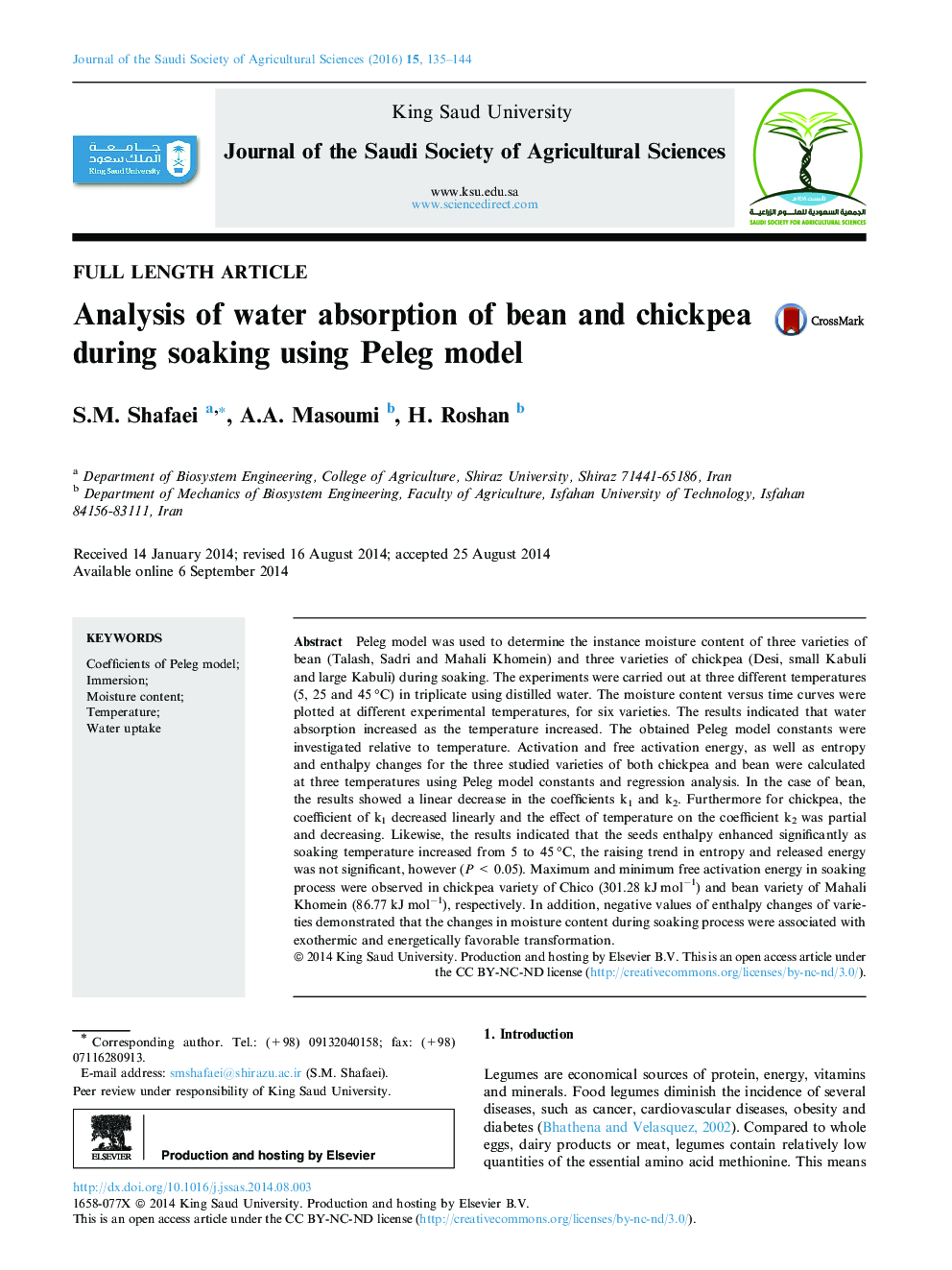| Article ID | Journal | Published Year | Pages | File Type |
|---|---|---|---|---|
| 4495595 | Journal of the Saudi Society of Agricultural Sciences | 2016 | 10 Pages |
Peleg model was used to determine the instance moisture content of three varieties of bean (Talash, Sadri and Mahali Khomein) and three varieties of chickpea (Desi, small Kabuli and large Kabuli) during soaking. The experiments were carried out at three different temperatures (5, 25 and 45 °C) in triplicate using distilled water. The moisture content versus time curves were plotted at different experimental temperatures, for six varieties. The results indicated that water absorption increased as the temperature increased. The obtained Peleg model constants were investigated relative to temperature. Activation and free activation energy, as well as entropy and enthalpy changes for the three studied varieties of both chickpea and bean were calculated at three temperatures using Peleg model constants and regression analysis. In the case of bean, the results showed a linear decrease in the coefficients k1 and k2. Furthermore for chickpea, the coefficient of k1 decreased linearly and the effect of temperature on the coefficient k2 was partial and decreasing. Likewise, the results indicated that the seeds enthalpy enhanced significantly as soaking temperature increased from 5 to 45 °C, the raising trend in entropy and released energy was not significant, however (P < 0.05). Maximum and minimum free activation energy in soaking process were observed in chickpea variety of Chico (301.28 kJ mol−1) and bean variety of Mahali Khomein (86.77 kJ mol−1), respectively. In addition, negative values of enthalpy changes of varieties demonstrated that the changes in moisture content during soaking process were associated with exothermic and energetically favorable transformation.
